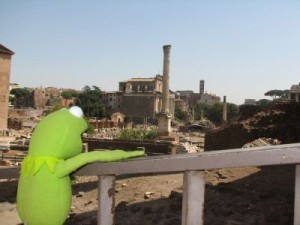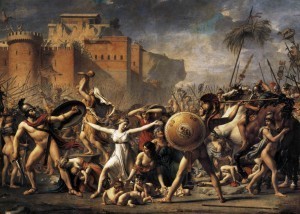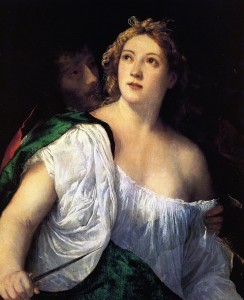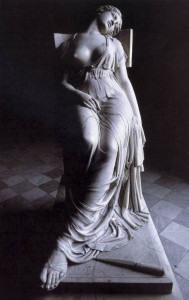Tansy Rayner Roberts's Blog, page 133
September 25, 2011
Kermit in Rome!
I did not know that "Kermit on Tour" was a thing in the world, but I had a crazy good time following him around his trip to Rome.
I was wondering whether a lot of frogs lived in ancient Rome…
Matrons of Awesome Part I: The Raptae
This post contains reference to historical stories of sexual assault and may upset or trigger some readers. Please proceed with caution, especially with the Lucretia story.
The Intervention of the Sabine Women, David Decade, 1790
1. The Wife of RomulusYep, the first woman in this list doesn't have a name.
Romulus was the founder of Rome and a fratricide who killed his brother for challenging his position as king (or, possibly, for mocking his half-built city walls). He dealt with the "oops I founded a city with no women in it" problem by inviting his neighbours, the Sabines, over to the newly built Rome for a dinner and a show, then attacking them and stealing their women.
The 'rape' in in the phrase 'Rape of the Sabine Women' is intended in the original Latin to mean 'capture' rather than 'sexual assault' though we can assume there was plenty of that as well. The Sabine women were captured by the Romans, and forcibly married to them in one of those charming historical rituals. Once they became pregnant, of course, they made the best of it and accepted the Romans as their husbands. So the story goes.
When the Sabine men went to war against the Romans in retaliation (like a year later, what were they doing all that time??) the un-named wife of Romulus (now a queen) and her compatriots ran on to the battlefield bearing their babies aloft and demanded that the fathers and grandfathers of their children make peace with each other.
The story pretty much encapsulates "making a silk purse out of a sow's ear." And has led to some fabulous paintings. But it's problematic, no matter which way you look at it – and as it happens, it's not the only rape myth that forms an essential part of Rome's early history. Romulus himself had also been conceived in rape, when his mother Rhea Silvia/Ilia lay down by the side of a river to nap, was visited by the god Mars, and woke up pregnant.
And then, most famously, there's…
Lucretia by Titian, 1515
2. LucretiaThe kingdom begun by Romulus (rapist, born of rape) came to an end because of a yet another rape.
The last king of Rome belonged to the Tarquin family, and his sons were a pack of loutish young yobs. One night over beer on yet another battlefield, they started boasting as to who had the best wife, as you do. A quiet young cousin of theirs insisted that his wife, Lucretia, was more virtuous than any of them.
Fully soused, the princes and their pals decided to bet on the matter, and rode home to see whose wives were best behaving themselves. They spied on the wives of the Tarquin princes who were (shock, horror) dining with each other, chatting and generally having a great time. Not bonking the slaves, not indulging in naughty parlour games with each other, not even drinking wine (a capital crime for women at this time) – just hanging out and having fun. So complete bitches, then.
Lucretia, on the other hand, was quietly at home with no company but her maidservants (read: slaves), working in wool by candlelight (or, you know, since she was so virtuous, probably in the dark). Her husband promptly won the bet.
All well and good, but one of the Tarquin princes was so affected by this experience that he became obsessed with Lucretia. One evening, he slipped away from camp by himself and went to visit her. As he was a kinsman of her husband, it was Lucretia's duty to offer him hospitality – dinner and a bed for the night – and she did so. When the household was asleep, Tarquin slid into Lucretia's room and held a sword to her throat.
The charming prince gave Lucretia a choice: submit to him, or he would kill her and a male slave, and leave them in bed together so she looked like an adulteress. Faced with these options, she did not struggle when he raped her.
The Dying Lucretia 1834 Marble. Palau.
Tarquin thought he was safe, because no woman would sully her reputation by admitting to being one of the raptae (Latin for snatched woman/stolen woman/rape victim). He didn't realise that Lucretia was braver than he gave her credit for. She called her father and her husband to her the next day, and told them exactly what Tarquin had done to her. Then, before they could stop her, she stabbed herself and died.Enter Brutus, a friend of the family. Outraged that the antics of the crown prince had caused the death of such a chaste and modest Roman matron, he used the death of Lucretia as an excuse to kick out the Tarquin monarchy and usher in a Republic. (the poet Ovid, in a neat play on words, refers to Brutus "snatching", yep, there's that word 'raptae' again, the knife from Lucretia's body. Thus implying that she was raped twice, literally by Tarquin, and metaphorically by Brutus, to further his own political ends.
What is most interesting about this story (apart from the ramifications of the Roman 'ideals' of womanhood which were still affecting women hundreds of years later) is that, whether or not it was true, it was the accepted story explaining the beginning of the Republic five hundred years later. No Roman batted an eyelash at the idea that a king could be deposed and an entire political system overturned because the heir to the throne wronged a woman, and they all believed her when she accused him of rape.
Whatever crappiness the Romans were responsible for, especially in matters of gender, I like to remember that about them.
=====
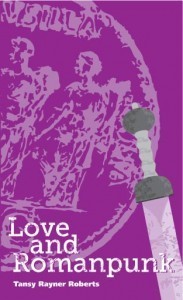 The Matrons of Awesome series was originally posted on Livejournal (LJ user: cassiphone) in March 2006 for Women's History Month.
The Matrons of Awesome series was originally posted on Livejournal (LJ user: cassiphone) in March 2006 for Women's History Month.
I'm reprinting the series as part of my Rock The Romanpunk week in celebration of my short story collection, Love and Romanpunk, which was published by Twelfth Planet Press earlier this year and is now available globally as an e-book as well as a pretty imperial purple print edition. Thanks to Wizard's Tower Bookstore you can also now purchase it for the Kindle.
Matrons of Awesome: Introduction
 In March 2006, I embarked on a blogging project for Women's History Month. I profiled 50 women from the history of Ancient Rome, over fifteen blog posts. It was fun and frantic, and I was far more concerned with telling the stories in an entertaining way than getting bogged down with academic detail.
In March 2006, I embarked on a blogging project for Women's History Month. I profiled 50 women from the history of Ancient Rome, over fifteen blog posts. It was fun and frantic, and I was far more concerned with telling the stories in an entertaining way than getting bogged down with academic detail.
I was still more than a year away from getting my PhD in Classics, and this was a much-needed breath of fresh air. It reminded me how much I love Roman history, and the women to be found there. It also, of course, gave me a chance to rail against some of the more frustrating aspects of studying Roman women, and highlight a whole bunch of my personal irritations.
In revisiting these posts, the temptation was to edit and rework them, though I decided to keep the series as an artefact in its own right. Then I changed my mind as soon as I saw the utterly tactless hash I had made of the Rape of the Sabine Women. So we have a mixture of posts exactly as they were, and posts I have tidied and reworked a little, for my own peace of mind. I have also included occasional commentary at the end of some chapters, when I really couldn't help myself.
My eldest daughter Raeli (short for Aurelia, which becomes relevant in Part II) was fourteen months old when I wrote these posts. I hadn't realised that until I scrolled past one of the old comments in which I describe my Dad watching I, Claudius while babysitting her in one room, while I finished my thesis in the other.
It's probably a good thing I didn't know then that it would be more than a year before the thesis finally was done, and I became Dr Tansy. Though maybe it would have helped if I had known that I would actually make it over the line! There were times when it seemed quite desperately uncertain.
Here it is, then, a time capsule within a time capsule, written with love and impertinence.
=====
PART I: The Raptae (Rape of the Sabine women, Lucretia)
=====
 The Matrons of Awesome series was originally posted on Livejournal (LJ user: cassiphone) in March 2006 for Women's History Month.
The Matrons of Awesome series was originally posted on Livejournal (LJ user: cassiphone) in March 2006 for Women's History Month.
I'm reprinting the series as part of my Rock The Romanpunk week in celebration of my short story collection, Love and Romanpunk, which was published by Twelfth Planet Press earlier this year and is now available globally as an e-book as well as a pretty imperial purple print edition. Thanks to Wizard's Tower Bookstore you can also now purchase it for the Kindle.
September 24, 2011
Best Reading of the Year 2011 (so far)
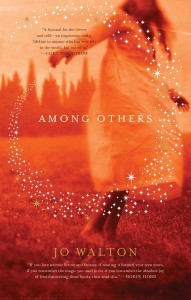 This one's for Jonathan, Gary & Mondy, who have been speculating a lot lately about what are the best books published in 2011 so far, that they should be paying attention to.
This one's for Jonathan, Gary & Mondy, who have been speculating a lot lately about what are the best books published in 2011 so far, that they should be paying attention to.
These are mine. It's entirely personal, of course, and based what I've actually read (as opposed to the towering To Read pile that will one day cause me major injury) but given that I haven't done nearly enough this year of reviewing the books I love, I think it's worth doing.
ADULT FICTION
Jo Walton
Among Others
A wonderful, wonderful book about the reading habits of young girls, with subtle magic and a fabulous theme of iconic SF books. At some point I hope I will write that essay I want to, about my lifelong relationship with Pamela Dean's Tam Lin and how that book trained me to get the most out of this one despite the fact that I've never read Delaney, Zelazny or more than two novels by Heinlein.
Kim Westwood
The Courier's New Bicycle
Utterly crunchy genderqueer dystopian thriller-mystery with an androgynous protagonist, and a fascinating pretendy future Melbourne. Particularly interesting (and chilling) is the portrayal of a society embracing conservative politics in response to trauma and crisis.
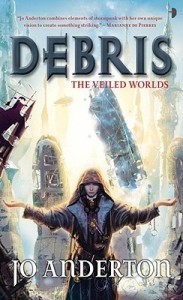 Jo Anderton
Jo Anderton
Debris
Impressive debut novel – my favourite kind of fantasy, in that it's about the professional lives of urbanites rather than anything involving bracken, horses or dwarves. It has a contemporary feel about it, and it is to the credit of the novel as well as the author that I spent most of the book trying to figure out for myself whether it was science fiction that feels like fantasy, or fantasy that feels like science fiction. The magic system (pions!) is rigorous and I love the application of it to architecture.
Glenda Larke
Stormlord's Exile
The third in a fantasy trilogy so good that I regularly pounce on people in the street, pressing battered paperbacks upon them. Like Jo's work, this has a rigorous magic system, and I adore the use of the geography of the desert cities and dunes, the emphasis on politics, social lives and art alongside battles and other military detail, the subtle interweaving of gender issues in amongst the epic drama and the tight, fast-paced story. It's just that good. If you haven't read epic fantasy in a long time, or have wandered away from the genre, this is one worth coming back for.
Trent Jamieson
The Business of Death
Another great third book of a trilogy, this time a Brisbane urban fantasy series with a blokey sensibility and a distinct, easy-to-read author voice. I love where Trent took this book, which is my favourite of the three, and the epic, utterly satisfying end (if it is an end) he wrote for Steve.
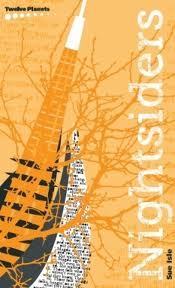 Sue Isle
Sue Isle
Nightsiders
I am so bad with reading anthologies and collections this year! As in, seriously incompetent. I'm somewhere in the middle of about a dozen. But this one I not only read over two days (hooray for short, excellent books) but am still completely in love with. Sue builds a fascinating future Perth, brought to its knees by climate change and a population that has mostly abandoned the city, and tells its story through some quite intimate character explorations. The world has gone to hell, but it's the personal tragedies and dramas – a girl betrayed by the woman she thinks of as a mother, a teenager desperate to access gender reassignment surgery, a lost treasure of a script that reminds them of a different time, a teacher worried what will happen to her students when she gets too old to be there for them – that Sue writes with such depth.
Catherynne M Valente
Deathless
A powerful, mighty novel which takes the role of women from traditional folk tales and turns it upside and and inside out, not only inverting it but reinventing it. I admired the prose and the themes but was certain I wasn't emotionally touched by this book until the last few chapters when it broke me, utterly. I'm still not sure I've put all the pieces back together. A masterwork by one of our great modern fantasists.
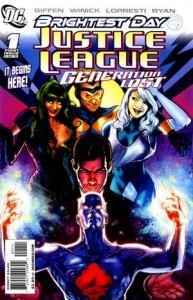 Keith Giffen & Judd Winick
Keith Giffen & Judd Winick
Justice League: Generation Lost Volume One
A graphic novel (half of a mini-series of 12 titles) which made me unreasonably happy. All those mates of mine who came out of the woodwork since the last Galactic Suburbia to admit that they, too, belong to the secret fandom of Maxwell Lord, Blue Beetle, Fire and Ice, Booster Gold et al… you need this book. So very, very much. It's what I wanted the new JLI #1 to be, and then some.
YOUNG ADULT
Penni Russon
Only Ever Always
Gorgeous, intense YA that shows a deft hand at all manner of writing techniques, and pulls the reader in and out of suburban tragedy and a surreal otherworld.
Margo Lanagan
Yellowcake
A collection of Margo's YA-friendly (well, in some cases not exactly FRIENDLY) stories, beautifully packaged. I'd read most of these before but it was a reprint collection I absolutely had to have! Probably one of the best introductions to her work, for those who haven't yet made the step into Lanagan territory. Here be monsters.
Karen Healey
The Shattering
I really enjoyed Karen's first book, Guardian of the Dead, but I feel more emotionally connected to this one. The friendships at the core of the story are compelling and wonderful and so utterly lacking in the kind of teen cliches I'm used to seeing. So many issues addressed sensibly and sensitively here, including teen suicide, anxiety disorders, bullying, coming out to your family, and so on, and yet this never feels like an 'issue book.' It's a rollicking, angsty adventure immersed in New Zealand culture, with a kick-ass climax.
Sarah Rees Brennan
The Demon's Surrender
Another third book in a trilogy – a wonderful series that has gripped, amused and surprised me since it first came out. A sharp, clever example of how you can write a trilogy that is three complete, self contained novels with their own unique identities and protagonists, that is still better than the sum of its parts. I didn't think I could love this book as much as its precedessors, or be as invested in its concerns and romance, but it far surpassed my expectations.
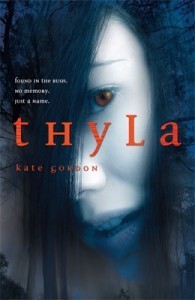 Kate Gordon
Kate Gordon
Thyla
The rarest creature imaginable: a paranormal adventure set in my own home town of Hobart, Tasmania. Using were-versions of our most iconic native animals, the Tassie tiger and devils. Yes, really. It's hard to believe that this is only Kate's second published novel, and her first fantasy. She takes some great narrative risks with this novel, and it takes off.
Marianne de Pierres
Burn Bright
a gorgeous gothy novel which does something very different with the vampire mythos. She sets up a city of clubbing and decadence, designed to feed the wildest desires of wild teenagers everywhere, then introduces a protagonist for whom that is basically the idea of hell. Very modern and of course, this being Marianne, there are SFnal elements hidden amongst the velvet, the cute boys and the bats.
Rock the Romanpunk!
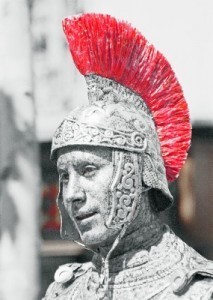 Exciting news! Love and Romanpunk is now available globally as an e-book. I'm very excited that my book is the first in the shiny new and improved Twelfth Planet e-store. To celebrate, I'm going to do a Rock the Romanpunk! week here at the blog, including reprints of my popular 50 Awesome Romans blog posts that I published on livejournal for Women's History Month a few years ago, some new Films Romana posts, and maybe some other surprises.
Exciting news! Love and Romanpunk is now available globally as an e-book. I'm very excited that my book is the first in the shiny new and improved Twelfth Planet e-store. To celebrate, I'm going to do a Rock the Romanpunk! week here at the blog, including reprints of my popular 50 Awesome Romans blog posts that I published on livejournal for Women's History Month a few years ago, some new Films Romana posts, and maybe some other surprises.
And of course the week will end with my Republic Reading in Hobart on Sunday 2 October. I look forward to seeing some of you there!
Rock the Romanpunk!
September 23, 2011
Nightwing #1, Birds of Prey #1, Red Hood and the Outlaws #1 [DC Reboot Reviews]
Once again I find myself tackling the second half of my week's comic haul with far less enthusiasm than the first half. Because, obviously, I read the ones I thought I would like first. This is a plan with drawbacks!
Mind you, if I'd read Red Hood and the Outlaws first I might have given up on comics altogether. Seriously. It's that bad.
 NIGHTWING
NIGHTWING
written by: Kyle Higgins
pencils by: Eddy Barrows
Nightwing first, which was… well, meh. Inoffensive and vaguely informative in that it tells us all the important things about Dick Grayson and where he is in his personal timeline. Plus the circus is back in town so we get a replay on that backstory too, for people who are completely new.
I really liked the idea that he didn't like the circus being in Gotham City because the city finds a way to use everything he loves against him. I liked that Batman (for once) didn't make an appearance, because frankly, he's being way overused in the New 52. I liked the crack about how being a circus clown in Gotham was no fun at all. Dick himself isn't too annoying, though I did find his judgemental inner thoughts about Bruce and his rich man privilege kind of annoying. Because, come on. Loft apartment does not give you indie cred.
But pretty much I only like Dick Grayson when he's being called on his shit by Barbara, Helena or Starfire, so there wasn't a lot for me in this one. As a side note, thanks to tiny writing and a bunch of splash pages with little text boxes, this was the first comic which was consistently awkward to read on the iPad rather than just having a couple of pages where I had to make fiddly adjustments.
Also, the art is kind of doofy.
Verdict: Competent, but forgettable.
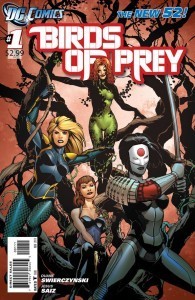 BIRDS OF PREY #1
BIRDS OF PREY #1
written by: Duane Swierczynski
pencils by: Jesus Salz
Yeah, the double whammy lack of Gail Simone and Oracle pretty much made me uninterested in this one, which was pretty much the only DC comic I regularly read through the Noughties. But… it's a girl super team, and Black Canary! I wanted to know what they were doing with both.
Sigh. Not much, it seems. I am not sure why Birds of Prey has been reinvented as a 'female criminals doing good' book as opposed to a more genuine force for good, and I'm a bit cranky at the entire lack of context. We still don't know whether Barbara's wheelchair time included Oracle, or if the original Birds of Prey fit into this continuity, and the appearance of Babs in this comic didn't really explain that. (I like it as a mystery in Batgirl as long as it's answered soon – but it's a frustrating hole in this title)
Dinah Lance is now a criminal herself, apparently on the run after killing someone with a punch. Not sure what storyline that's a carryover from, but taking it just as the throwaway line it is here – what? Seriously? Of all the superheroes having to face charges for undue violence, it's the martial artist with a magical canary cry? Why a punch, of all possible moves? It's just confusing.
Dinah's sidekick Ev/Sparrow seems like a fun addition to her team-in-the-making and I liked the chemistry between the two of them, though the religious commentary seemed a bit jumbled and out of place. Sad we only got a sneaky hint about Katana in this issue. And Babs came across as quite judgy and condescending. I MISS ORACLE SO MUCH OMG!
Verdict: Love me some Canary, but this is Birds of Prey in name only without Oracle as the eyes in the sky and moral centre of the story. BABS AND DINAH FOREVER AND HELENA TOO IF SHE'S AROUND.
Actually, where is Huntress in this reboot? Too much to hope with all these 'back to basics' versions of the characters that she gets to be Bruce & Selina's daughter this time around? All that Italian mob stuff has been bugging me since the early 90′s.
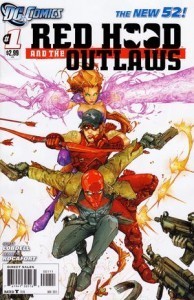 RED HOOD AND THE OUTLAWS #1
RED HOOD AND THE OUTLAWS #1
written by: Scott Lobdell
art by Kenneth Rocafort:
So I'm going to get ranty. You might want to sit back, pop in the earbuds, make sure the breakables are secure, that sort of thing.
WHAT THE EVERLOVING FUCK HAVE THESE PEOPLE DONE TO STARFIRE?
You know why I picked this comic up? I was vaguely interested in the whole Red Hood/Jason Todd thing, but only vaguely. Pretty much the main reason was because I'm going through major Teen Titans nostalgia right now, and I caught sight of the cover, and remembered that this was the one that Starfire was in. It seemed a weird place to put her, but I love me some original Teen Titans, and given the lack of Donna Troy I thought, let's see how Kory's getting on.
LET ME TELL YOU ABOUT KORY. Who is, by the way, 'Kori' now. Obviously the 'y' made her sound too intelligent.
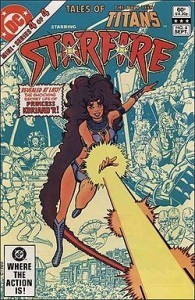 I mostly know Starfire/Princess Ko'riandr/Kory from Godiyeva's old 80′s Teen Titans comics, and a bunch I ended up collecting on my own. She was a space princess, a warrior with super strength and high levels of military training, and she was all kinds of awesome. Sure, she wore an outfit more appropriate to a lingerie catalogue designed by a hardware store, and she had a backstory involving slavery, but she stood proud and strong in her silly space bikini, her hair ROCKED THE EIGHTIES, and she was taller than her boyfriend.
I mostly know Starfire/Princess Ko'riandr/Kory from Godiyeva's old 80′s Teen Titans comics, and a bunch I ended up collecting on my own. She was a space princess, a warrior with super strength and high levels of military training, and she was all kinds of awesome. Sure, she wore an outfit more appropriate to a lingerie catalogue designed by a hardware store, and she had a backstory involving slavery, but she stood proud and strong in her silly space bikini, her hair ROCKED THE EIGHTIES, and she was taller than her boyfriend.
In more recent years, Wikipedia tells me, she has had some major plotlines in a save-the-universe trio with Animal Man and Adam Strange, and basically has been out there doing her thing, occasionally almost getting it together with significant ex Dick Grayson/Nightwing. As recently as Infinite Crisis, she was out there being a warrior and fighting intergalactic bad guys.
In Red Hood and the Outlaws, however… let me count the ways. For a start, she is drawn constantly as if she is in a slow motion porn film, complete with curving back, languid limbs and 'how can I stand so as to best show off my curves.' She is, purely, a sex object designed for the male gaze. Her warrior skills are entirely at the disposal of Jason Todd/Red Hood and his mate Roy Harper/Arsenal, her current allies. As an alien, apparently, she can barely tell humans apart, and has thus no interest in her history with the Teen Titans or any of her old friends. They mean nothing to her.
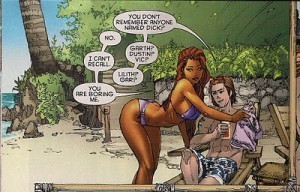 She is sexually available to both men, claiming that this is something she wants. And maybe it is something she wants. But it seems awfully convenient, especially as she has apparently had an entire personality bypass, or a frontal lobotomy. Or is possibly just stoned out of her head.
She is sexually available to both men, claiming that this is something she wants. And maybe it is something she wants. But it seems awfully convenient, especially as she has apparently had an entire personality bypass, or a frontal lobotomy. Or is possibly just stoned out of her head.
Starfire has been reduced from a hero and warrior to a brainless sexbot. She is placed in each frame like a pretty, pouting piece of furniture, and contributes nothing to the story. As far as I can make out, her only narrative reasons for being there are a) so Jason Todd can thumb his nose at Dick Grayson & b) so Roy can get laid. Or, more specifically, so that Roy and Jason can share a girl. Who doesn't answer back, or seem particularly aware of her surroundings.
Verdict: a seedy bromance which screws over a classic DC heroine for the sake of… I don't even know. Giving all those feminist comics critics something to rage about? Believe me, I won't be back. Even if it turns out to be a colossal fake out. Oh I hope it is a colossal fake out. For Kory's sake.
September 22, 2011
WFSFA SPA = still awesome
Winning the WSFA Small Press Award last year for Siren Beat (accepted in Washington by my awesome publisher Alisa) was one of the highlights of my year, and gave me huge confidence to spend a goodly chunk of this year turning Nancy Napoleon, angsty damaged heroine, and her world of sea monsters and irresponsible gods into a novel.
So I'm delighted to see another strong, diverse shortlist for this year's prize and particularly that another Australian indie publisher is represented here, Tehani Wessely's Fablecroft.
It's a wonderful award and comes with a FREAKING BEAUTIFUL TROPHY, so I wish all the finalists the very best of luck.
The Washington Science Fiction Association is pleased to announce the finalists for the 2011 WSFA Small Press Award for Short Fiction (published in 2010):
"After the Dragon" by Sarah Monette, published in Fantasy Magazine (January 2010), edited by Cat Rambo and Sean Wallace.
"Amaryllis" by Carrie Vaughn, published in Lightspeed Magazine (June 2010), edited by John Joseph Adams.
"The Cassandra Project" by Jack McDevitt, published in Lightspeed Magazine (June 2010), edited by John Joseph Adams,
"The Days of Flaming Motorcycles" by Catherynne M. Valente, published in Dark Faith, edited by Maurice Broaddus and Jerry Gordon, Apex Book Co. (May 2010).
"Enid and the Prince" by RJ Astruc, published in Worlds Next Door, edited by Tehani Wessely, FableCroft Publishing (June 2010).
"Lord Bai's Discovery" by Jean Marie Ward, published in Dragon's Lure, edited by Danielle Ackley-McPhail, Jennifer Ross, and Jeffrey Lyman, Dark Quest Books (June 2010).
The award honors the efforts of small press publishers in providing a critical venue for short fiction in the area of speculative fiction. The award showcases the best original short fiction published by small presses in the previous year (2010). An unusual feature of the selection process is that all voting is done with the identity of the author (and publisher and editor) hidden so that the final choice is based solely on the quality of the story.
The way the blind judging works is all stories submitted during the first of the year are sent to the award administrator who removes all identifying information regarding author, publisher, and editor from the stories and then send them on to the committee. The award committee then narrows the selection of stories down to 5-8 finalists. These final stories, still with no identifying information, are then read and voted on by the membership of the Washington Science Fiction Association (WSFA). After the votes are in, the list of finalists is announced to the committee, the club, and the general public.
The winner, chosen by the members of the Washington Science Fiction Association (www.wsfa.org), is announced at their annual convention, Capclave (www.capclave.org), held this year on October 14th-16th in Gaithersburg, Maryland.
Friday Links has a Talking Cat
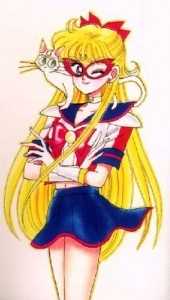 I've been hunting for a new addictive, fluffy manga series since Fruits Basket came to an end, and was very enticing. I'm going in!
I've been hunting for a new addictive, fluffy manga series since Fruits Basket came to an end, and was very enticing. I'm going in!
Also I've had a great time recently reading and discussing comics, and particularly discovering how many of my friends secretly love the Keith Giffen Justice League era. After my complaints at the 'big guns' style of Justice League, Cranky Nick sent me a link to this brilliant comic strip which sums it all up for me. Love it!
For those looking for an update on the #YesGayYA controversy (which seems to have mostly died down now) Cleolinda posted a brilliant survey and summary of the main points of what happened and what was said. It's a very even-handed, non-accusatory post, which she felt compelled to write when she saw the situation being described inappropriately as "a hoax." I also liked Julia Rios' take on it, from the Outer Alliance blog. Foz Meadows uses this issue as a jumping off point to talk about the heartbreak that happens when kids become aware of being discriminated against, regardless of the specific form of bigotry.
Speaking of YA, this older post that Tehani pointed me towards asked the question 'how dark are YA covers really?' after that other YA controversy from earlier this year, and has some great visuals to illustrate the answers.
Seanan Maguire wrote a powerful and important post about the divide between rich and poor when e-books are concerned. This is something I've been thinking for a while, whenever people gleefully predict the 'death of print books'. Australia is a country where it's possible to be in "information-poverty" regardless of your financial situation, and so it's far more obvious from here that e-technologies, however wonderful, are not available to everyone. Seanan writes about the issue beautifully, and I think it's an essay that needs more exposure.
Charles Tan, who has also been an advocate for issues to do with e-poverty (and general book poverty) in countries outside the US, writes here about speculative fiction in the Philippines and what SF local content is available.
I've really been enjoying the guest posts about pro writers and indie press over at Fablecroft, and particularly this piece by the sharp and generally awesome Cat Sparks.
Bitch Magazine's blog has been doing a fantastic series about the various problematic portrayals of mental illness in pop culture, and I had to single out this particular post which talks about why, exactly, this issue is so important and how pop culture can not only shape society's perceptions about social issues, but can damage lives.
Meanwhile, a man involved in the gaming industry writes a letter to his someday daughter, apologising for the world he works in, and explaining at length many of the problems which are endemic to the gaming industry. The post is incredibly long, rambling in places and flawed in several places, and yet is a vital and important document which depicts a personal journey from dumb, default-misogynist teenager to sensible and pragmatic pro-feminist adult who is ashamed of what he sees around him. I particularly love the bit where he focuses on the kneejerk assumptions and insults made about 'feminists' among male gamers and tries to explain it in their own language:
Meanwhile, Jim C Hines has something to say about what it actually means when 'political correctness' is used as an insult, and comes up his own new version, to make people feel better about their bigotry. I think my favourites are "fulfill the masculinity quota" and replacing the upsetting word "privilege" with '"disproportionately equal."
Blue Beetle #1, Wonder Woman #1, Catwoman #1, Supergirl #1 [DC Reboot Reviews]
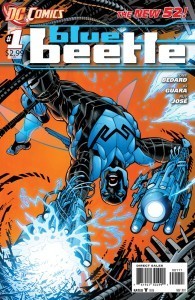 Blue Beetle #1
Blue Beetle #1
Written by: Tony Bedard
Pencils: Ig Guara
A very likeable re-introduction to Jaime Reyes, the modern Hispanic teenage Blue Beetle. I avoided him for a long time because of my grief and resentment about the death of Ted Kord (NOT SAYING I'M OVER IT) but thanks to Batman: Brave and the Bold I accidentally got introduced to Jaime and I like that his Blue Beetle is completely different to *mine* and that the version I saw in the cartoon was so respectful of the past.
It feels a bit odd having the origin story retold again so soon after Jaime's Blue Beetle was introduced to the DC Universe, but given that I've never read his title before, I'm not complaining – this is a great comic, and we've been lacking in nice simple origin stories in the New 52. Not much Blue Beetle as such, but we get a lot of Jaime's family and school life, and the culture he belongs to. I really like the way that we are getting common phrases of Spanish (is this the same as Hispanic? Help!) thrown into the dialogue so we can learn them, because it constantly reminds me that the story is not for the most part taking place in an Anglo US setting, and it's great to see a comic marketed at teens which isn't treating them like idiots. Is it wrong that I kept getting Veronica Mars vibes whenever the cool gang leader friend turned up? That's probably a wrong thing. Though if that means Jaime gets to be Veronica, that's pretty cool.
Also, having recently rewatched the Rise of the Blue Beetle and Fall of the Blue Beetle episodes of B:B&B with Raeli, in which Jaime questions whether he deserves to be a hero, having come into his powers by accident (and arguing with his mate about whether Hal Jordan's origin story meant he was deserving or just plain lucky), it's cool to see that the circumstances by which he acquires his magical scarab (cue Ted Kord from the grave complaining that no one ever gave him a magical scarab, in his day you had to build your own) are pretty heroic: sure, he lucks out, but he's in that place because he did something stupidly brave.
Verdict: good stuff, I'm sticking around. And not just in the hopes of a dead Ted cameo. Not even. Maybe a little bit.
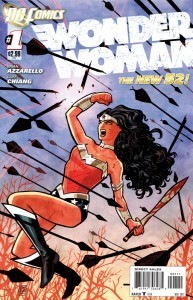 Wonder Woman #1
Wonder Woman #1
Written by BRIAN AZZARELLO
Art and cover by CLIFF CHIANG
It didn't offend me. Seriously, it didn't. I don't know if I like it yet, I am highly suspicious after so many fails, but there was nothing in this comic that outright offended me. So there's that.
The art is an oddity to me. It isn't a style that appeals in the first instance – it's a bit blocky and spiky and definitely an acquired taste. But I think on the whole I approve of it because even though WW is running around in her star spangled knickers, and even though she does spend about three pages of the comic randomly naked, the style does make her feel less sexualised than many other art styles do. If anything there's a similarity to the angular version of Diana that we see in the various DC animated series, and I like the impression that if she elbows you in the gut, you stay down.
Also, while the comic as a whole is taken up with a lot of pages of monsters and violent action thingies that don't involve our heroine at all, I like the use of Greek mythology as something a bit more scary and less – well, comic book – than has often been done in the past. Sure, there are no Amazons riding giant kangas, which is sad, but I very much liked the cameo of a sardonic wounded Hermes, and the monsters.
The thing I really REALLY like about the comic, though, is that the POV character through whom we are first introduced to Diana is a young woman with issues and problems of her own. I love, love, love when the iconic female warrior is paired with a female 'client' (in the noir detective sense) who needs help – a revelation about my own story preferences that I learned from Joanna Russ' The Adventures of Alyx, even though I should have already learned it from Xena.
Yes, I did just compare an issue of Wonder Woman to Joanna Russ. Oh help, I think I like this comic. Shut up. Don't tell anyone. Let's hang in there for a few more issues and see if it gets stupid all over it.
Do you know what I really REALLY like, apart from all the lack of stupid and the Bechdel passing, and so on? There is no attempt to make Wonder Woman 'relatable' (yes, Jodi Picoult, I'm looking at you). Also no first steps off Paradise Island, which would have made me want to bite walls. Wonder Woman is out there in the world, she's recognisable, people know who she is, and she doesn't have to fumble with a credit card or be vulnerable or have a bad hair day or appear like a clueless teenager in anyway, because she's FREAKING WONDER WOMAN and if you can't relate to the awesome then fine, go read something else and get out of the way while she saves the world. Again.
Apparently I liked this comic more than I thought. Obviously it will break my heart.
Verdict: yeah, yeah.
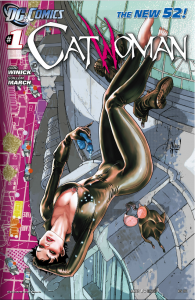 Catwoman #1
Catwoman #1
Written by Judd Winick
Art by Guillem March
Another pleasant surprise. Yes, as io9 informed us, this issue is largely about Catwoman's rack. But you know, that's okay, because it's an awesome rack, and unlike almost every other female superhero, a sexy attitude is a huge part of whom this character is supposed to be. I liked this version of Selina a lot – having not read any modern Catwoman comics other than her occasional appearances in Birds of Prey. I very much liked the use of her voice through monologue, the fact that she was effectively 'towered' in the first episode (everything you have gets smashed so you can start from scratch – classic story opening trope), that we see a friendship with another woman, and that the last several pages are pretty much all about shagging Batman.
It's kind of funny how many comics of this new 52 have an obligatory Batman appearance in them, from a single panel to a whole guest role. Anyone counting?
The best sex scenes in any fiction are the ones that tell you about character, and you learn all you need to know about the Batman-Catwoman chemistry, past relationship and current state of play from this one. I also like the panel which actually shows how you can have sex while keeping most of the costumes on – and even that is not only playing with the joke, but also tells you a lot about why they are attracted to each other.
So yes, I liked this one – comics seem to be much shorter than they were in my day, and many of these first issues have ended quite abruptly or seem to be telling far less story than I expect. This one uses that length effectively by using the double layer of Selena's inner voice as well as her cat-like moves, shocking violence, defending the defenceless, and raunchiness. I feel that I have a very strong sense of what this book is, from the first issue, which makes it an excellent first issue. I will probably have to read a few more before I decide if I actually care enough to be in it for the long haul, but I do like the fact that this is a comic that promotes sensuality through the female gaze, and utterly justifies the sexiness of the lead character through a convincing narrative. I'm willing to bet this is… a rarity in modern comics.
Verdict: great rack.
 Supergirl
Supergirl
Written by Michael Green and Mike Johnson
Art by Mahmud Asrar
Ah, yes. Supergirl. It was interesting reading this one straight after Catwoman, because everything Catwoman does right, this comic does wrong. It also utilises an inner voice monologue, but it's a boring, boring by the numbers monologue, devoid of a compelling character voice. There's a lot of action shots but nothing happens, and unlike Catwoman, we get no character interactions.
We get a lot of shots of Supergirl in an unreasonably tiny outfit, in the snow. This bugs me because she refers to her outfit as being a form of official robes in Kryptonian culture, something that she would normally only don upon her graduation in a year's time. So… Kryptonians are basically straight out of Mad Men, then? Because if it's an outfit that conveys status and maturity, let her put some FUCKING pants on. I don't care about Wonder Woman wearing trousers or not (though I adore the Tiny Titans approach to this question) but when you use the narrative of the story to justify a teenager walking around in her knickers, at least LET IT MAKE SENSE.
Oh, and Superman turns up at the end. But that's it.
A very disappointing first issue that does nothing to tell us what kind of comic this is going to be. Unless the teenage girl in her underwear being shot at is the point.
VERDICT: I think I may just stick to Supergirl: Cosmic Adventures in the 8th grade, which had a far more awesome first issue and packs so much more story into its pages. Possibly because it's not lingering over the teenage girl's body as she crouches unhappily in the snow.
September 20, 2011
Agathon #5 – Poirot Investigates (1924)
 Kathryn's and I have taken the challenge to read every book written by Agatha Christie, in order of publication and we're blogging as we go along. We're calling it the Agathon! You can find Kathryn's post over here: If you'd like to read the conversation going on in the comments. As a warning, there may be spoilers, though they will be signposted.
Kathryn's and I have taken the challenge to read every book written by Agatha Christie, in order of publication and we're blogging as we go along. We're calling it the Agathon! You can find Kathryn's post over here: If you'd like to read the conversation going on in the comments. As a warning, there may be spoilers, though they will be signposted.
5 – Poirot Investigates (1924)
Short Stories (Featuring: Poirot and Hastings, Inspector Japp makes an appearance)
KATHRYN SAYS:
So Poirot Investigates is the first short story collection that we've read as part of the Agathon, and I have to say I'm felling fairly meh about it. If anything these shorts remind me of flash fiction – they're all gimmick but no have real character development (perhaps we should call it Flash!Christie!) and this leaves us with a set of very varied mysteries, in which Hastings is always wrong, Poriot acts a little silly but is superciliously right in the end. Of course. Granted, this just might be how Poirot and Hasting interact forever more (I guess we shall see!), but at least in a novel it only happens once, rather than the 11 times it occurs in this collection. I think another issue is that in a novel, the suspects often play a very central part in the story, with their own character development and plot. This is really missing in these shorts – there is very few secondary characters at all, and I think none that rate more than a cursory look, be they villain or victim.
The one story that seemed to buck this trend for me was 'The Kidnapped Prime Minister', in which Hastings relates a mystery from during the war when Poirot was not as well established and actually shows some doubt in his abilities! This short also makes some reference to actual historical events, and I did wonder how much based on fact they might be. (Though the Prime Minister in question is a fake – who knew there were so many!? http://en.wikipedia.org/wiki/List_of_fictional_Prime_Ministers_of_the_United_Kingdom).
I guess also of note was 'The Adventure of the Egyptian Tomb', in which Poirot and Hastings travel to to an archaelogical dig in Egypt. In this short the setting it doesn't rate much of a mention, but Christie sets at least two future stories at archaeological digs so it's interesting to see it first popping up here. (Christie's second husband was an archaeologist, which fueled her interest in this area).
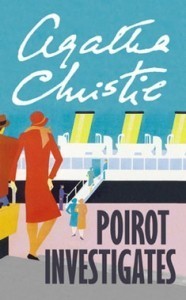 TANSY SAYS:
TANSY SAYS:
I was pretty 'meh' about this one too – and I agree it feels like the same story told over and over. Few of them are interesting enough characterwise to justify them being there, and they really don't improve for being collected together in this way. 'The Adventure of the Egyptian Tomb' was actually one of my favourites, perhaps because it did rely on characters and characterisation rather than a succession of posh ladies whose jewels are being stolen or whatever. Though of all the jewel-stealing-posh-ladies stories, my favourite was 'The Adventure of the Western Star' but that could be because it was the first in the collection, so I hadn't tired of them yet. Another stand out for me was 'the Case of the Missing Will' because I kind of love stories about inheritance and tricksy old dead millionaires for some reason. Considering, though, that the premise is that their 'modern woman' employer is having to earn her inheritance by proving to her dead uncle that the intelligence and education he disapproved of in life is actually worthwhile, it would have been nice if the answer to the question 'is it cheating to just hire Poirot to solve the riddle' was answered by her and not by a certain smug Belgian.
Disappointing to get so much Hastings here, in so many stops and starts, but no character progression or hints as to what's going on with Cinderella or anything with his private life. He really is just a cypher here, narrating a bunch of fairly ordinary cases and getting to be dumber than Poirot. What a life! To be honest, I kind of hope he snaps at one point and beats his employer over the head before running away to join the circus.
COMING SOON
The Secret of Chimneys (1925)
Anthony Cade, Superintendent Battle
The Murder of Roger Ackroyd (1926)
Hercule Poirot
The Big Four (1927)
Hercule Poirot, Arthur Hastings, Chief Inspector Japp
The Mystery of the Blue Train (1928)
Hercule Poirot
The Seven Dials Mystery (1929)
Eileen "Bundle" Brent, Superintendent Battle

